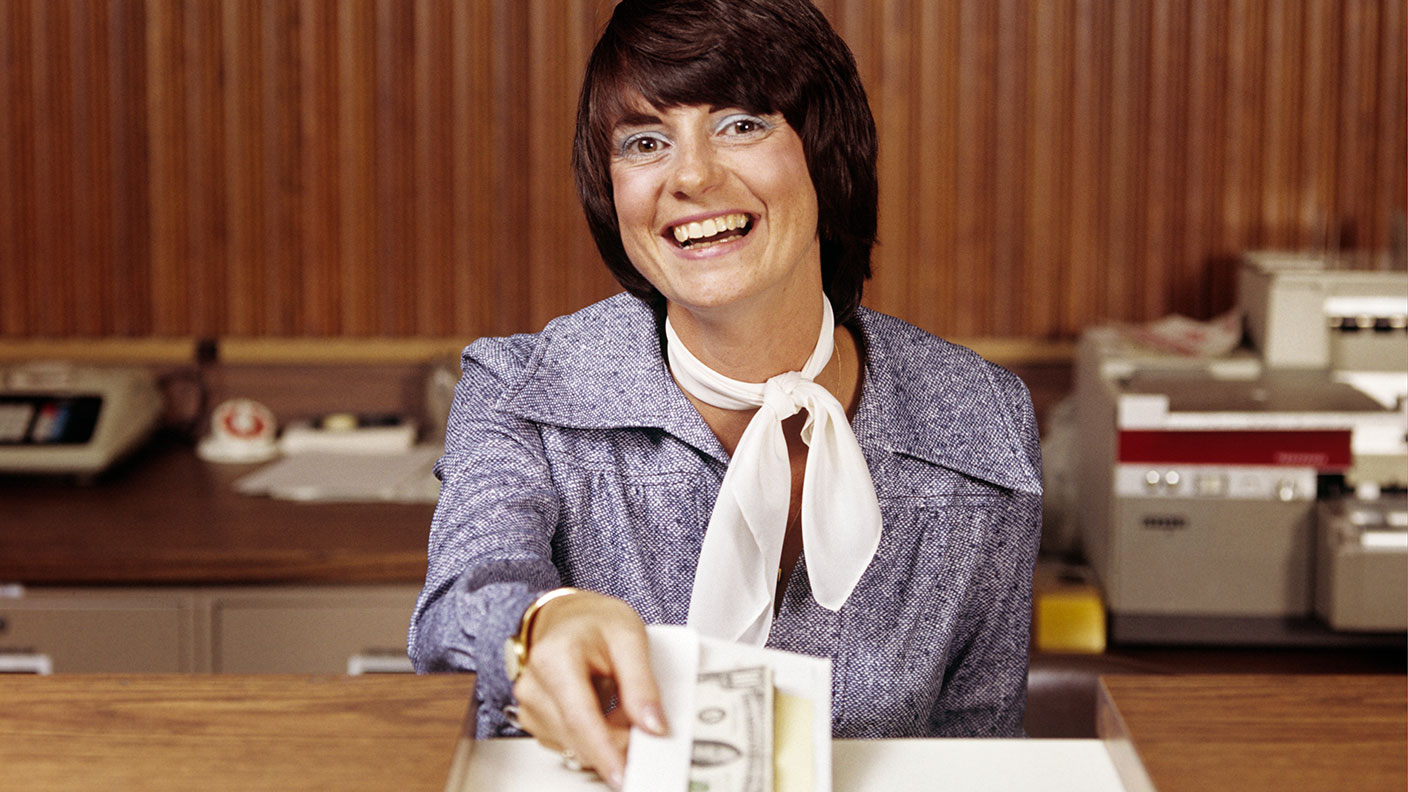How big data will feed the global population – however big it gets
Precision agriculture – a mixture of big data and robotics – will squeeze ever-greater yields from every acre of crop, says Merryn Somerset Webb.


On the MoneyWeek cruise last week there was much talk about sustainability about pollution, about climate change, about energy usage and waste and generally about the ability of the earth to keep giving and giving to a growing human population.
Regular readers will know that, being great believers in human ingenuity, we are generally optimistic on these things. That's a position increasingly borne out by new technology.
Consider agriculture. The truth is that, while there are obviously iffy moments (North Korea, China's great leap forward', etc) agricultural yields always rise over time as new techniques and technologies take farming to new levels. Some of the our major crops have seen yields rise ten-fold in the last 200 years corn yields alone are up four-fold since the 1950s.
MoneyWeek
Subscribe to MoneyWeek today and get your first six magazine issues absolutely FREE

Sign up to Money Morning
Don't miss the latest investment and personal finances news, market analysis, plus money-saving tips with our free twice-daily newsletter
Don't miss the latest investment and personal finances news, market analysis, plus money-saving tips with our free twice-daily newsletter
We're reaching one of those new levels right now thanks to precision agriculture' a mixture of big data and (coming soon) robotics that helps farmers to customise the cultivation of every square foot of their land.
According to IBM(which is active in the area) by "collecting real-time data on weather, soil and air quality, crop maturity and even equipment and labour costs and availability" and then using predictive analytics, farmers can make smarter decisions, decisions that result in better productivity, less waste, fewer pesticides, less energy and water usage and, in the end, fewer people.
One of the best descriptions of how all this works comes from Jess Lowenberg-DeBoer in Foreign Affairs magazine. The key to getting this right is to use what is known as variable rate technology' to map every part of a field for things such as phosphates, acidity, potassium and the like, and then to treat each part of any field with the fertilisers that suits it and to see which fields will work best for which crops at which time of year.
Right now, this means putting sensors in the soil manually to check which bit needs what, something that means that, in the US, they are used only every 2.5 acres (in Brazil it is every 12). That's a start, but it also means that "huge productivity gains" are missed soil can change every few feet.
It's also expensive which is why only 20% of US farms are fully precision-farmed. However, new sensors are in development that can be put into the ground every few feet, take regular readings and report those readings via GPS, something that will lead to a system whereby each plant effectively reports its needs as the tractor approaches. Fertiliser drops can then be automatically adjusted as the vehicle moves down a field.
There are also sensors in development that can check on the colours of plants to judge their water and nitrogen requirements.
There's more. GPS data can also be used to auto-guide' tractors. Manual driving is skilled and expensive, and involves a lot of overlapping (farmers worry more about missing bits of the field than they do about over fertilising), says Lowenberg-DeBoer. Auto-guidance takes away this problem (nothing is missed and nothing is done twice).
That takes us on to the next bit.
Some 60% of UK farms are thought to use some kind of precision farming techniques (sensor systems, cameras, drones, virtual field maps, GPS-guided tractors etc) but if tractors can be guided via GPS they don't need drivers at all. And if tractors don't need drivers (driverless tractors are being tested and introduced in the US), they don't need to be particularly big.
The future might be about entirely automated agriculture fields looked after by bots on the ground checking for weeds, pests and fertiliser levels, while drones check the weather above and report all information back to the farmer's central systems.
There's a fun piece on this in the Guardian. The key point to note is that this isn't all futuristic imagining about how we might feed a future world, it is technology we have and we are beginning to use. As one farmer told the Guardian, "in ten years we will look back at today and think that we were dinosaurs in our methods".
So how do we invest in all this? There are the big players IBM and Accenturebeing the obvious players in digital agriculture, and John Deere being the obvious in the equipment area (they'll be making the driverless tractors). Otherwise a lot of the interesting companies in the area are unlisted (the UK's Precision Decisions for example).
That makes it tempting look at the robotics market. Jim Mellon listed all his favourite robotics stocks for us late last year (Kuka and Yamaha are two of the big leaders in agricultural robotics) and this week's cover story will look at more.
Finally, we talked at length on the MoneyWeek Cruise about a French firm that has a finger in many of the relevant pies here. I will be telling John all about it in our podcast on Friday. Look out for that!
Get the latest financial news, insights and expert analysis from our award-winning MoneyWeek team, to help you understand what really matters when it comes to your finances.
Merryn Somerset Webb started her career in Tokyo at public broadcaster NHK before becoming a Japanese equity broker at what was then Warburgs. She went on to work at SBC and UBS without moving from her desk in Kamiyacho (it was the age of mergers).
After five years in Japan she returned to work in the UK at Paribas. This soon became BNP Paribas. Again, no desk move was required. On leaving the City, Merryn helped The Week magazine with its City pages before becoming the launch editor of MoneyWeek in 2000 and taking on columns first in the Sunday Times and then in 2009 in the Financial Times
Twenty years on, MoneyWeek is the best-selling financial magazine in the UK. Merryn was its Editor in Chief until 2022. She is now a senior columnist at Bloomberg and host of the Merryn Talks Money podcast - but still writes for Moneyweek monthly.
Merryn is also is a non executive director of two investment trusts – BlackRock Throgmorton, and the Murray Income Investment Trust.
-
 Boost for over 100,000 families on Child Benefit as new HMRC payment system rolled out
Boost for over 100,000 families on Child Benefit as new HMRC payment system rolled outThousands of households will no longer have to pay the dreaded High Income Child Benefit Charge through self-assessment
-
 Are you being haunted by the ghost of Christmas past? How festive cutbacks could boost your long-term wealth
Are you being haunted by the ghost of Christmas past? How festive cutbacks could boost your long-term wealthThe average family spends around £1,000 over the Christmas season. Here’s how much you could have gained if you had invested some of the money instead.
-
 House prices to crash? Your house may still be making you money, but not for much longer
House prices to crash? Your house may still be making you money, but not for much longerOpinion If you’re relying on your property to fund your pension, you may have to think again. But, says Merryn Somerset Webb, if house prices start to fall there may be a silver lining.
-
 Prepare your portfolio for recession
Prepare your portfolio for recessionOpinion A recession is looking increasingly likely. Add in a bear market and soaring inflation, and things are going to get very complicated for investors, says Merryn Somerset Webb.
-
 Investing for income? Here are six investment trusts to buy now
Investing for income? Here are six investment trusts to buy nowOpinion For many savers and investors, income is getting hard to find. But it's not impossible to find, says Merryn Somerset Webb. Here, she picks six investment trusts that are currently yielding more than 4%.
-
 Stories are great – but investors should stick to reality
Stories are great – but investors should stick to realityOpinion Everybody loves a story – and investors are no exception. But it’s easy to get carried away, says Merryn Somerset Webb, and forget the underlying truth of the market.
-
 Everything is collapsing at once – here’s what to do about it
Everything is collapsing at once – here’s what to do about itOpinion Equity and bond markets are crashing, while inflation destroys the value of cash. Merryn Somerset Webb looks at where investors can turn to protect their wealth.
-
 ESG investing could end up being a classic mistake
ESG investing could end up being a classic mistakeOpinion ESG investing has been embraced with enormous speed and zeal. But think long and hard before buying in, says Merryn Somerset Webb.
-
 UK house prices will fall – but not for a few years
UK house prices will fall – but not for a few yearsOpinion UK house prices look out of reach for many. But the truth is that British property is surprisingly affordable, says Merryn Somerset Webb. Prices will fall at some point – but not yet.
-
 This isn’t the stagflationary 1970s – but neither is it the low-rate world of the 2010s
This isn’t the stagflationary 1970s – but neither is it the low-rate world of the 2010sOpinion With soaring energy prices and high inflation, it might seem like we’re on a fast track back to the 1970s. We’re not, says Merryn Somerset Webb. But we’re not going back to the 2010s either.
